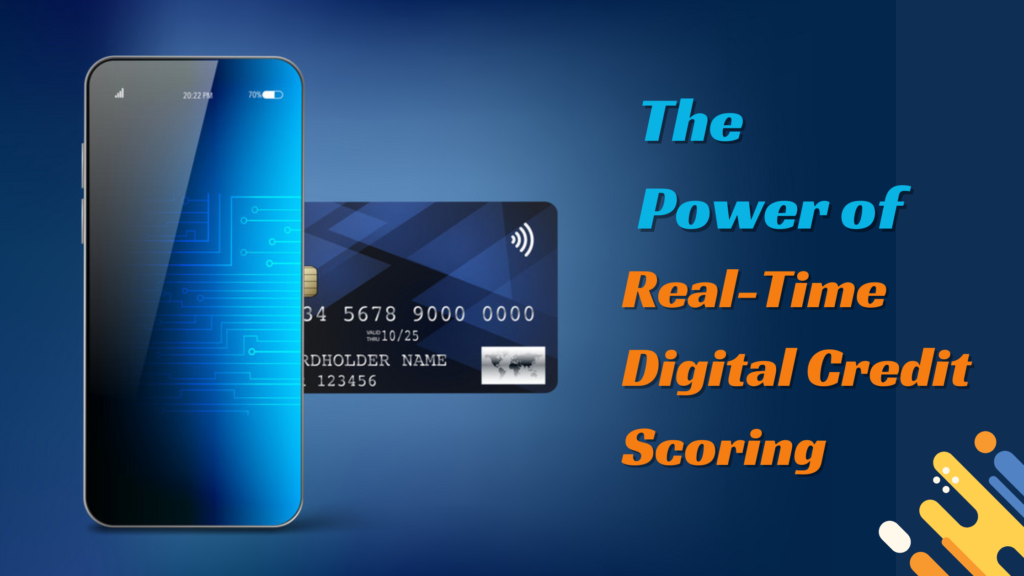- 2.1 Better interactions with clients
- 2.2 Operations are now more efficient.
- 2.3 Better management of risk
One innovative method changing how creditworthiness is evaluated is the digital credit scoring platform, happening in the fast-paced world of financial services. Digital credit scores in real-time use many new data sources to give a more accurate and instant evaluation of a borrower’s ability to repay loans, going beyond traditional models that mainly look at old data. This new way of making decisions speeds up the process. It makes the financial system more open to everyone by making it easier for people and businesses with bad or no credit to get financial goods.
Credit ratings are problematic for lenders and consumers for several reasons. Traditional credit rating algorithms employ loan payback history, credit card activity, and other financial data. However, this strategy may mislabel first-time borrowers or those with limited credit histories as high-risk or unsuitable. These systems can widen socioeconomic divides since low-income families may not have the resources to build credit ratings or histories. Traditional credit scoring can’t always account for changing financial realities. Creditworthiness assessments may be inaccurate or outdated. Responsible debt managers may face higher borrowing rates or denied opportunities. These issues highlight the need for more flexible credit scoring algorithms to capture a person’s current and future financial behaviours.
Read on the blog to know more!
How does digital credit scoring work in real-time?
Real-time digital credit score, which uses a lot of non-traditional data points, is a fast way to determine if someone is creditworthy. Some of these are digital footprints, transaction histories, and real-time data on income and jobs. New credit scoring systems don’t just look at past credit exchanges. Instead, companies like RiskSeal LinkedIn use cutting-edge technologies like machine learning and artificial intelligence (AI) to look at data showing how and what someone is doing financially.
Digital credit scoring in real time has these pros:
- These models aim to include people who don’t have bank accounts or haven’t been seen by credit systems before. They do this by looking at data other than traditional credit records.
- Speed: Thanks to AI and automation, these systems can look over applications in minutes instead of days.
- Thanks to AI systems constantly learning from new data, credit scores are getting more accurate and able to adapt to economic changes.
Why You Should Use Real-Time Digital Credit Scoring?
Better interactions with clients
Real-time credit scoring improves the customer experience by offering feedback right away. Real-time digital credit scoring services can increase customer happiness and trust.
Operations are now more efficient.
Lenders care very much about how quickly and efficiently they can check credit and approve loans. Using real-time scoring, much of the work that goes into making decisions can be done automatically. By giving faster credit decisions to more customers, financial companies can reach more people and gain a competitive edge.
Better management of risk
Complete and up-to-date statistics are used to get a more accurate risk picture. Real-time digital credit scoring can lower the rate of default. This type of scoring can see risk signs that older systems might miss. This kind of proactive risk management keeps the credit market healthy and protects the investor at the same time.
How do instant online credit scores work scientifically?
Digital credit scoring in real-time is based on artificial intelligence (AI) and machine learning (ML), which handle vast amounts of data to make intelligent lending decisions. Algorithms run these models and use unusual data sets, like what people do on social networks, their cell phones, and online sales, to guess what people will do in the future. For instance, patterns in a person’s financial activities can tell you a lot about their spending habits and how stable their finances are, which is essential for figuring out if they are creditworthy.
Sources of data for digital credit scores:
- Transactional data comes from buying things online or doing business with money.
- Social Data is information gathered from social media sites that show what people buy and how they live.
- Utility Payments: Paying your bills on time regularly shows that you are careful with money.
Challenges and Ethical Considerations
Real-time digital credit scores have many pros, but they also have some cons. These are all bad, but prejudice and racism stand out as the worst. If AI models aren’t properly supervised and changed, they could strengthen biases that people already have without meaning to. Collecting and analysing vast amounts of personal data creates more privacy problems because of the chance of abuse and breaches.
Dealing with Moral Problems:
- Being open about calculating credit scores is essential for building trust and responsibility.
- Formulas should be reviewed and changed regularly to lower the chance of bias.
- Taking extra steps to ensure private information doesn’t get lost, misused, or changed is what “data security” means.
The Future of Real-Time Digital Credit Scoring
As the banking business undergoes a digital revolution, more and more banks will likely use real-time digital credit scoring. This tool is essential for the future of the loan business and can show a borrower’s current and complete financial situation. Also, these systems will improve as rules and laws are updated to keep up with new technology. This will make it easy for everyone to get credit and make things more fair.
The Bottom Line
A constantly updated digital credit score is a huge step forward from the old ways of checking credit. Lenders can use this technology to make their operations more efficient and help underserved groups access financial services. Even with these problems, real-time digital credit scoring is an excellent step towards a future where credit choices are more fair, faster, and more accurate.
